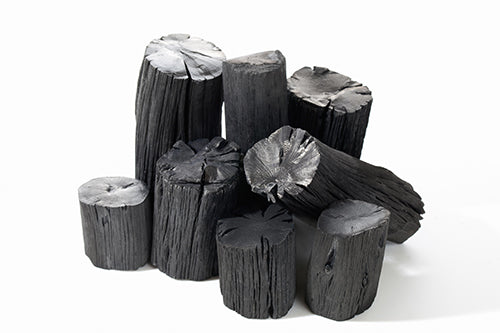Your Cart is Empty
FREE SHIPPING ON ALL ORDERS IN USA

Steam-activation is primarily used for coconut charcoal and coal.
In the production of steam-activated charcoal, first the coconut shell or coal is heated to create a char. This char is then "activated" in a furnace at high temperatures of 1,700° to 1,800°F with steam in the absence of oxygen. In the steam-activation process, all volatile compounds are removed, and at the same time layer after layer of carbon atoms are pealed off, enlarging the existing internal pores, and leaving behind a carbon skeleton. The carbon + steam reaction results in producing hydrogen gas and carbon monoxide (C+H2O=H2 +CO). As the carbon monoxide gases off it takes carbon atoms with it. Typically 3 pounds of raw charcoal will produce 1 pound of activated charcoal. This is a perfect example of the saying "Less is More". Less carbon atoms yields More internal space.
Once the activated charcoal is cooled off, to remove the soluble ash content, it may be either "water-washed"* (which requires a lot of water) or it is "acid-washed" (to remove the acid-soluble ash content) and then repeatedly "water-washed" to remove any trace of the acid solution. (*Not to let anything go to waste, the charcoal "vinegar" is sometimes collected and sold as commercial ascetic acid or processed into table vinegar.)
Because of the very high temperatures required for steam activation (600 - 1,200 °C), temperatures you cannot achieve in a conventional oven (260 °C), this method is all but limited to industrial technology.